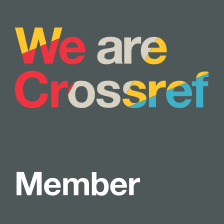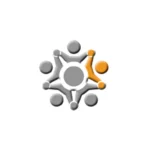Eirini Bougoulia – Department of Financial and Management Engineering School of Engineering, University of the Aegean, Chios, Greece
Michail Glykas – Department of Financial and Management Engineering, Engineering School, University of the Aegean, Greece
Keywords:
Critical Success Factors;
Knowledge Management
Frameworks;
KM Performance
Measurement
Abstract
The goal of the paper is to suggest a comprehensive and integrated knowledge management implementation and maturity assessment model based on the most common critical success factors and corporate enablers discovered during a systematic overview of the knowledge management maturity models and the related literature review. Summarizing the review leads to the discovery of KMMMs CSFs and key themes, while simultaneously examining the idea of standardization through accepted KM standards and their core principles. To provide a model that can be used by both practitioners and researchers in the future to improve organizational performance and to be used as a tool for knowledge management performance measurement, the implementation stages of the proposed framework, the maturity levels, the proposed assessment measuring tools and methods are presented in an approach that encompasses the core guidelines of ISO 30401.

Download file

LIMEN Conference
8th International Scientific-Business Conference – LIMEN 2022 – Leadership, Innovation, Management and Economics: Integrated Politics of Research – CONFERENCE PROCEEDINGS, Hybrid (EXE Budapest Center, Budapest, Hungary), December 1, 2022,
LIMEN Conference proceedings published by the Association of Economists and Managers of the Balkans, Belgrade, Serbia
LIMEN Conference 2022 Conference proceedings: ISBN 978-86-80194-66-0, ISSN 2683-6149, DOI: https://doi.org/10.31410/LIMEN.2022
Creative Commons Non Commercial CC BY-NC: This article is distributed under the terms of the Creative Commons Attribution-Non-Commercial 4.0 License (https://creativecommons.org/licenses/by-nc/4.0/) which permits non-commercial use, reproduction and distribution of the work without further permission.
Suggested citation
Bougoulia, E. & Glykas, M. (2022). An Integrated Proposal for a Knowledge Management Implementation & Maturity Assessment Model. In V. Bevanda (Ed.), International Scientific-Business Conference – LIMEN 2022: Vol 8. Conference proceedings (pp. 179-193). Association of Economists and Managers of the Balkans. https://doi.org/10.31410/LIMEN.2022.179
References
Adair, J. (1973). The Action-centred Leader, London, McGraw-Hill.
Armistead, C., & Machin, S. (1997). Implications of business process management for operations management. International Journal of Operations & Production Management, 17(9), 886–898. https://doi.org/10.1108/01443579710171217
Armstrong, M., & Taylor, S. (2014). Armstrong’s handbook of human resource management practice, 13th edition. London: Kogan Page.
Bougoulia, E., & Glykas, M. (2022). Knowledge management maturity assessment frameworks: A proposed holistic approach. Knowledge and Process Management. https://doi.org/10.1002/kpm.1731
Cappelli, P., & Crocker-Hefter, A. (1996). Distinctive human resources are firms’ core competencies, Organizational Dynamics, 24 (3), pp 7–22.
CEN-CWA 14924-1. (2004). The European Guide to Good Practices in Knowledge Management (edited by the European Committee for Standardization).
Churchill, N. C., & Lewis, V. L. (1983). The five stages of small business growth. Harvard Business Review, 61, 30-50.
Gaál, Z., Szabó, L., Kovács, Z., Obermayer-Kovács, N., & Csepregi, A. (2008). Knowledge management profile maturity model. In Proceedings of the European Conference on Knowledge Management (pp. 209-216). Southampton: ACPI.
Hansen, M. T., Nohria, N., & Tierney, T. (1999). What’s your strategy for managing knowledge?, Harvard Business Review, March–April, pp 106–16.
ISO. (2018). ISO 30401: Knowledge Management Systems – Requirements.
ISO. (2015). ISO 9001: 2015 Quality Management Systems – Requirements, ISO, Geneva.
Kuriakose, K. K., Raj, B., Satya Murty, S. A. V., & Swaminathan, P. (2010). Knowledge management maturity models-a morphological analysis. Journal of Knowledge Management Practice, 11(3).
Massingham, P. (2014). An evaluation of knowledge management tools: Part 1 – managing knowledge resources. Journal of Knowledge Management, 18(6), 1075–1100. https://doi.org/10.1108/JKM-11-2013-0449
Nonaka, I., & Takeuchi, H. (1995). The Knowledge-Creating Company: How Japanese Companies Create the Dynamics of Innovation, Oxford University Press, New York, NY.
Paulzen, O., Doumi, M., Perc, P., & Cereijo-Roibas, A. (2002). “A Maturity Model for Quality Improvement in Knowledge Management” ACIS 2002 Proceedings. https://aisel.aisnet.org/acis2002/5
Pee, L. G., & Kankanhalli, A. (2009). A model of knowledge organizational management maturity: based on people, process and technology. Journal of Information and Knowledge Management, 8(2), 79-99. http://dx.doi.org/10.1142/S0219649209002270
Polanyi, M. (1967). The Tacit Dimension, Routledge & K. Paul, London
Sajeva, S., & Jucevicius, R. (2010). The model of knowledge management system maturity and its approbation in business companies. OcialiniaiMokslai, 3(69), 57-68
Weber, F. (2002). Proceedings of UNICOM Seminar, Towards Common Approaches & Standards in KM, 27 February, 2002, London. Standardisation in Knowledge Management – Towards a Common KM Framework in Europe.
Zeferino, M. E., Ricardo, P., Rosane, M., & Artur, D. S. J. (2020). ISO 30401: The standardization of knowledge. International Journal of Development Research, 10(6), 37155– 37159.




